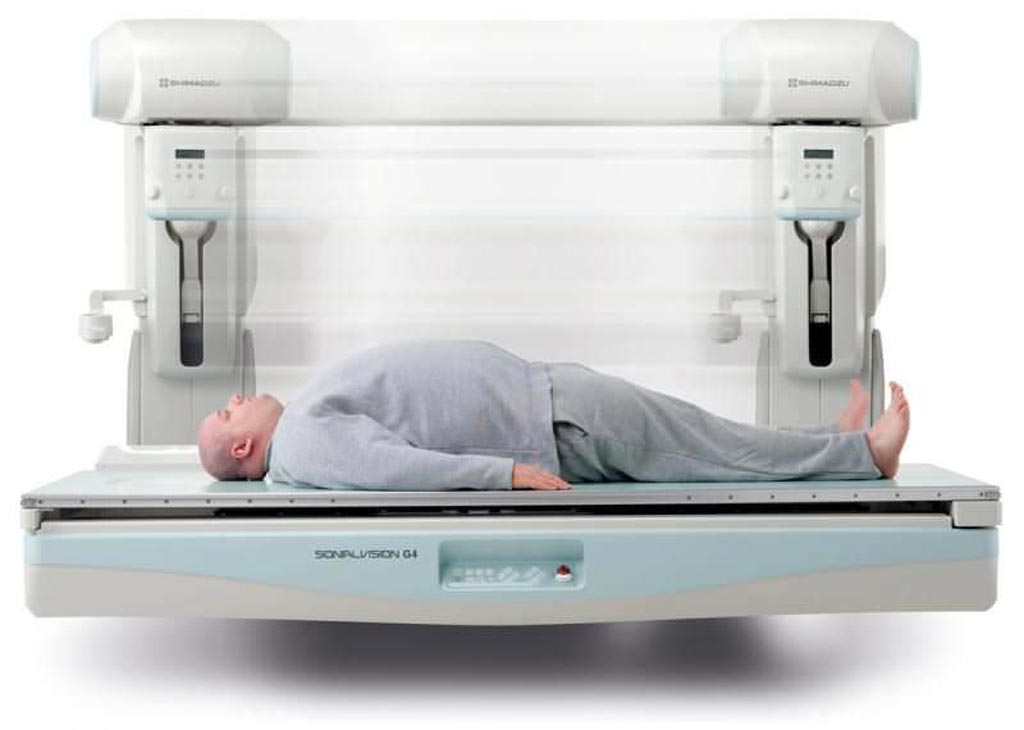Image Processing Technology Enhances Sonialvision Exams
By MedImaging International staff writers
Posted on 01 Mar 2018
Shimadzu Corporation (Kyoto, Japan), which manufactures diagnostic imaging equipment, has further enhanced the range of examinations covered by its Sonialvision G4 R/F system. Equipped with the largest available FPD at 17 inches (43 x 43 cm) and Shimadzu’s digital image processing engine SUREengine-Advance, the Sonialvision G4 covers the widest possible range of examinations, providing inter-departmental hospital capability.Posted on 01 Mar 2018
The SUREengine FAST image processing technology significantly reduces the X-ray irradiation dose in endoscopic retrograde cholangiopancreatography (ERCP), which is used in the examination and treatment of bile and pancreatic ducts applying endoscopes. In comparison to the fluoroscopic X-ray irradiation pulse rate (15 fps) used during conventional endoscopic examinations and in combination with the Sonialvision G4, the SUREengine FAST technology allows fluoroscopic exposure to be reduced by approximately 45%, while maintaining image quality and real-time performance.

Image: The Sonialvision G4 R/F system (Photo courtesy of Shimadzu).
The other functions of the Sonialvision G4 cover applications such as tomosynthesis, T-smart and SLOT Advance. Shimadzu’s High Definition Tomosynthesis imaging technology allows the reconstruction of the tomosynthesis image from original images acquired in the 1×1 high definition mode using a 6-inch (15 cm) field of view. This mode provides tomosynthesis images with even higher spatial resolution and is very effective for diagnosing small areas such as bones in the fingertips, etc., in detail or for detecting very small micro-fractures. Its Oblique Tomosynthesis feature provides oblique tomographic images reconstructed at any optimal angle of up to ± 20 degrees laterally or vertically to match the ideal diagnosis angle. This feature is helpful when examining spines, hip joints and other areas that can be otherwise difficult to observe by standard horizontal tomographic images parallel to the tabletop.
Low-dose tomosynthesis allows multiple slices of volume data to be observed with a minimized X-ray dose, requiring only single linear tomography stroke acquisition. By switching the field of view and using collimation, the amount of X-ray exposure can be reduced to prevent unnecessary radiation exposure outside the area of interest. The mode allows for further minimization of the dose level, making the system ideal for pediatric use as well. Position-free tomography tomosynthesis by Sonialvision allows images to be recorded at any angle required for diagnosis. This includes a variety of table angles – with the patient standing or in reverse inclined position to apply gravity – which is not possible with CT scanners. This helps to expand the examination possibilities, for example to examine joints under weight-bearing conditions.
T-smart is the most sophisticated tomosynthesis technology that automatically divides the original projection images into two sets of projection images (metal-free projection images and metal-only projection images). It then performs iterative re-constructions on each of them and finally integrates the two data sets into one to provide a “T-smart” image. SLOT Advance provides high-accuracy images with long fields of view, such as for full-spine or full-leg images, using minimal X-ray dose. The combination of Sonialvision G4’s extra-long imaging chain slide coverage and its large FPD of 17 inches achieves an even wider longitudinal and transverse imaging area of up to 55 x 17 inches (141 x 42 cm), as compared to the image stitching capabilities of CR units. Additionally, the grid is removable from the table, thereby making it effective for a much lower dose required especially in pediatrics and gynecology. Furthermore, the table's heavy-duty design supports a patient load of up to 318 kg in the horizontal position.














